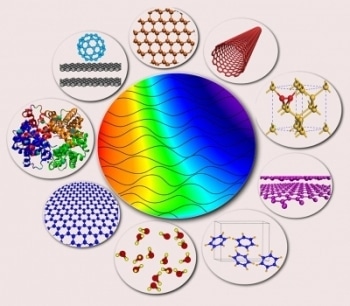Mar 11 2016
 An accurate description of the van der Waals forces between objects at the nanoscale must account for the electrostatic interactions between wavelike charge density fluctuations. These forces are ubiquitous in nature and influence the chemical and physical properties of systems throughout chemistry, biology, physics and materials science.
An accurate description of the van der Waals forces between objects at the nanoscale must account for the electrostatic interactions between wavelike charge density fluctuations. These forces are ubiquitous in nature and influence the chemical and physical properties of systems throughout chemistry, biology, physics and materials science.
The dynamics of the solar system and the attraction between celestial bodies, such as the moon and the Earth, are all governed by gravitational forces. Similar to these gravitational forces, attractive forces exist between objects at the nanoscale. These are known as van der Waals forces, which are ever-present in nature and are believed to play a major role in establishing the function, stability, and structure of various systems across the fields of physics, chemistry, biology, and materials science.
To put it simply, every molecular system and every material in nature experiences these forces. In fact, we are finding that their influence is quite extensive, and includes protein-drug interactions, the stability of the DNA double helix, and even the peculiar adhesion properties of the gecko’s foot.
Robert A. DiStasio Jr., Assistant Professor of Chemistry and Chemical Biology, College of Arts and Sciences, Cornell University
In covalent bonds electron pairs are shared between atoms. Van der Waals forces are relatively eak when compared to these covalent bonds, and they occur when there are rapid electrostatic interactions between the variable electron clouds surrounding tiny, microscopic objects. Conversely, van der Waals forces are quantum mechanical in origin, and have presented a challenging prospect at both theoretical and experimental levels.
In a paper titled, “Wavelike Charge Density Fluctuations and van der Waals Interactions at the Nanoscale” that was published in the March 11 issue of Science journal, DiStasio along with Alexandre Tkatchenko from the Fritz Haber Institute and the University of Luxembourg have presented a new proposition to describe the van der Waals forces in the nanoscale.
Generally, there are two modes of thought with regard to van der Waals forces. For many biologists and chemists, the existing description of the interactions of these forces is the image of two induced electric dipoles, which are analogous to the magnet’s S and N poles, indicating the inconsistent distributions of negative and positive charges. However the picture adopted by many physicists revolves around the fact that interactions of van der Waals forces among larger macroscopic objects are caused by wavelike vacuum fluctuations.
Tkatchenko and DiStasio demonstrated in their study that these basic forces existing between nanostructures should also be elucidated by the electrostatic interactions between delocalized or wavelike charge density fluctuations, rather than the local or particle-like induced electric dipoles mentioned above.
According to Tkatchenko and DiStasio, the study could help scientists to interpret and regulate the interactions between nanoscale objects, and could aid in bridging the gap between these two belief systems.
Our work is demonstrating that there is a much wider variety of systems, such as nanostructured systems, where you have to think about the van der Waals force in terms of interactions between waves instead of interactions between particles.
Alexandre Tkatchenko, Fritz Haber Institute, University of Luxembourg
Paul McEuen, the John A. Newman Professor of Physical Science, and director of the Kavli Institute at Cornell for Nanoscale Science, views this latest research as a stepping stone towards a long, challenging journey to what he defined as “solving biology.”
It sounds like a rather boring problem, but it’s actually a deeply important problem, the way biomolecules assemble and so on. It’s a hugely important problem, especially for someone like me, who’s a nano-guy, but it’s going to take time to solve.
Paul McEuen, Professor of Physical Science, Cornell University
McEuen added that he and DiStasio are looking forward to partner on similar studies in the near future.
This work provides a conceptual framework, or common language, that biologists, chemists, physicists and materials scientists can use to describe van der Waals forces at the nanoscale. It also provides a computational framework for accurately predicting how these ubiquitous interactions influence the physical and chemical properties of matter.
Robert A. DiStasio Jr., Assistant Professor of Chemistry and Chemical Biology, College of Arts and Sciences, Cornell University
Other collaborators who participated in the study were Alberto Ambrosetti and Nicola Ferri of the Fritz Haber Institute of the Max Planck Society (Germany) and the University of Padova (Italy).
This study was funded by grants from the European Research Council, Cornell University, and the Deutsche Forschungsgemeinschaft.